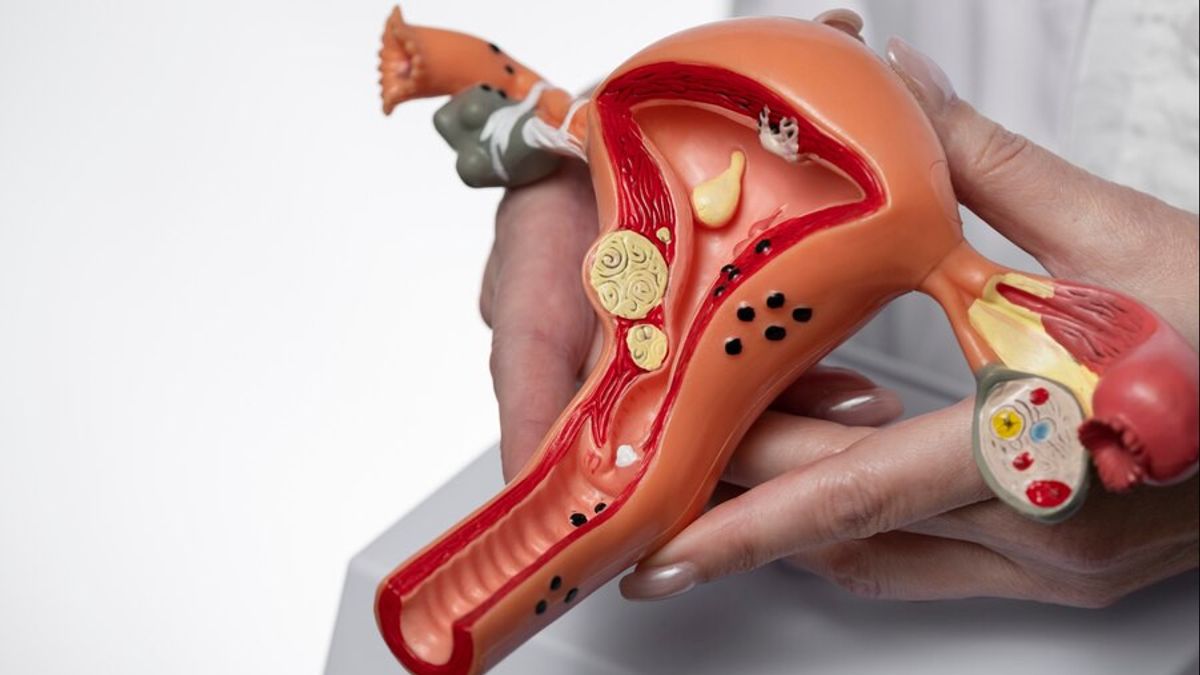YOGYAKARTA - Although not all cysts are dangerous, it is important for you to know some of the signs and symptoms. By knowing how to check your own cyst, you can better understand how to maintain your body's health.
This article will provide practical guidance on how to check the cysts you can do at home.
Reporting from the Cleveland Clinic page, the ovarian cyst is a pocket containing a liquid that grows in the egg (ovarian). This ovarian plays an important role in the menstrual cycle of women.
Most ovaries are harmless and often disappear on their own. However, in some cases, cysts can cause problems and require medical treatment.
There are several types of ovarian cysts, such as follicle cysts and luteum cysts. These cysts are generally formed during the normal menstrual cycle.
In addition, there are also other types of cysts that may require more attention, such as cyst dermoids or endometrosis.
Routine pelvis examination is very important to detect the presence of an ovarian cyst early on. If a cyst is found, doctors can monitor or provide appropriate treatment.
Please note, small cysts often do not cause any complaints, you may not even notice any cysts in your body.
While you can't directly check the cysts physically, a larger cyst can cause some symptoms like:
Before continuing, also read the article that discusses the Causes of Implementation Not Smoothly and Irregularly
If the above symptoms last for a long time, there is a possibility that you will experience polycistic ovarian syndrome (PCOS).
PCOS is a condition that causes irregular menstruation cycles and other hormonal problems. Women with PCOS often experience obesity, difficulty getting pregnant, excessive hair growth in the body (hysutism), and difficulty losing weight.
Your health care providers will first rule out the possibility of pregnancy as the cause of your symptoms. Then, they may use the following tests to diagnose the ovarian cyst:
Your healthcare provider will check the interior of your pelvis to look for lumps or changes.
SEE ALSO:
This imaging procedure uses sound waves to produce images of organs in your body. It can detect cysts in your ovaries, including the location and whether the cyst contains mostly liquid or solid.
This is a procedure performed in the operating room. Your health care provider inserts the camera through an incision (intersection) in your stomach, so you can see your reproductive organs and pelvic cavities. If your health care provider diagnoses the current cyst, they can immediately remove it.
In addition to how to check the cyst itself, follow other interesting articles too. Want to know other interesting information? Don't miss it, keep an eye on the updated news from VOI and follow all the social media accounts!
The English, Chinese, Japanese, Arabic, and French versions are automatically generated by the AI. So there may still be inaccuracies in translating, please always see Indonesian as our main language. (system supported by DigitalSiber.id)


















